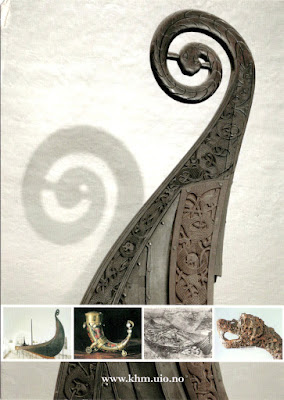July 20, 2016
2657 NORWAY (Oslo) - The Oseberg ship
Located at Bygdøy in Oslo, the Viking Ship Museum is part of the Museum of Cultural History of the University of Oslo, and houses archaeological finds from Tune, Gokstad (Sandefjord), Oseberg (Tønsberg) and the Borre mound cemetery. The main attractions at the Viking Ship Museum are the Oseberg ship, Gokstad ship and Tune ship. The Oseberg ship (Norwegian: Osebergskipet) was discovered in a large burial mound at the Oseberg farm near Tønsberg in Vestfold county.
The Oseberg burial mound contained numerous grave goods and two female human skeletons. The ship's interment into its burial mound dates from 834 AD, but parts of the ship date from around 800, and the ship itself is thought to be older. Excavated by Norwegian archaeologist Haakon Shetelig and Swedish archaeologist Gabriel Gustafson in 1904-1905, this ship is widely celebrated and has been called one of the finest finds to have survived from the Viking Age.
The ship is a clinker built "karv" ship built almost entirely of oak. It is 21.58 m long and 5.10 m broad, with a mast of approximately 9-10 m. With a sail of c. 90 m², the ship could achieve a speed up to 10 knots. The ship has 15 pairs of oar holes, which means that 30 people could row the ship. Other fittings include a broad steering oar, iron anchor, gangplank, and a bailer. The bow and stern of the ship are elaborately decorated with complex woodcarvings in the characteristic "gripping beast" style, also known as the Oseberg style.
About the stamp
The stamp is part of the series Lighthouses, designed by Inger Sandved Anfinsen, and issued on June 5, 2015:
• Kvitsøy - It's on the postcard 2657
• Slåtterøy
• Lindesnes
• Kjeungskæret
References
Oseberg Ship - Wikipedia
Viking Ship Museum (Oslo) - Wikipedia
Sender: Iulia Anania
Sent from Oslo (Oslo / Norway), on 28.06.2016
Subscribe to:
Post Comments (Atom)


No comments:
Post a Comment